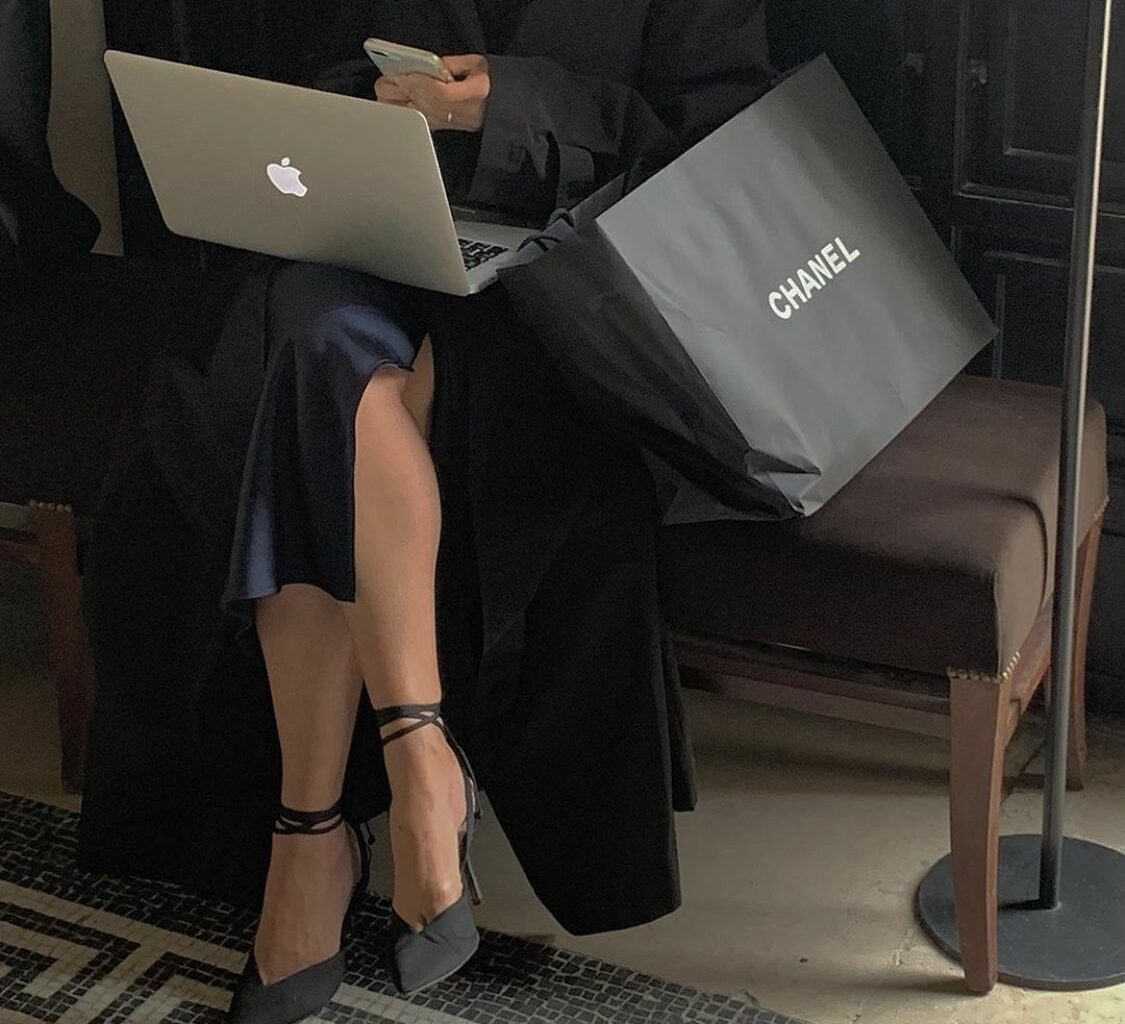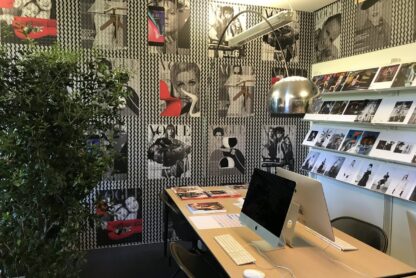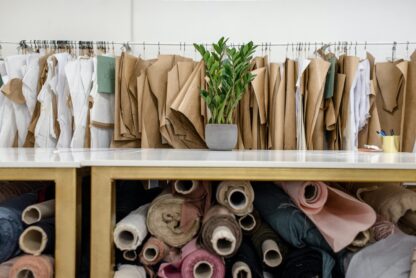If you want to work in fashion, you are probably wondering what is the most important skill you need to impress the recruiters and work confidently in this industry. The truth is, while there are many skills worth having, the one that is common among 90% of the jobs and used in ALL the departments is Microsoft Excel.
Yes, even though it may sound surprising, you read that right. Fashion is often seen as a glamorous industry filled with clothes, magazines and runways (which is true); it seems that fashion professionals are always on set, running from one place to another (thank you fashion movies). Let’s face it: it’s hard to imagine them doing anything that doesn’t include designing clothes, styling looks, attending appointments and fashion events.
The reality, which can be groundbreaking once you enter this industry, is that fashion workers spend a lot of time sitting at their desk, just like any employee in another industry. And one thing many of them do on their laptops is working on the Excel program. Don’t worry though: you will still get your dose of glamour and fun doing more “fashionable” activities. But Excel will be a part of your job as well. And it can actually be fun, too!
To be honest, I didn’t consider it at all when 10 years ago I was at the beginning of my career in fashion. But my role as a fashion career mentor is to help you break and succeed in fashion and reveal the industry secrets so you can make it.
Let’s talk about Microsoft Excel for the fashion industry, how it is used in the different roles, and why you need it for your career in fashion.
What is MS Excel and who uses that program in the fashion industry?
Everyone in fashion uses Excel: not only the analytical roles of the industry such as buyers and merchandisers, marketing and Ecommerce managers… but also people on the creative side of the industry. Think about any task and rest assured that there is someone that is making lists and organizing everything on an Excel sheet: from making a list of articles to write for the fashion magazine, the samples and pieces of clothing you need for a shooting, the list of guests invited to a fashion show, the list of items sold, the different types of fibers, dates of when you’ll receive the fabric from the suppliers, how many pieces are stocked in a store…Excel is used to organize and keep track of absolutely everything!
So if you are considering a career in fashion or just starting out, Excel is a crucial skill you need to impress your employers, no matter what department you’re heading into.
Let’s look at some roles that use Excel frequently: merchandisers, buyers, marketers, ecommerce, PR and social media managers, but also editors, designers and stylists.
Some fashion professionals use it more frequently. Some even daily and others use it a couple of times per week in support of their main job.
In analytical jobs, Excel is a must.
Merchandisers use this program to analyze past sales and trends to see what’s selling best, keep contacts of suppliers organized and easy to find, and track the stock places in each store.
If we look at buyers, they use Excel to analyze fashion KPIs such as the sell-through, sell in and sell out, OTB, trend sales, keep track of consumers for their different stores, oversee delivery and stock levels, and manage orders placed during fashion weeks and showroom appointments.
Then, Marketing specialists use this program to produce competitor and market analysis, organize budget allocation, monitor marketing campaigns’ performances, as well as manage event calendars and deadlines.
If you work in the Ecommerce department, Excel helps you to keep track of product selections and sales, analyze website updates, etc.
For a demanding career in PR where you have to be extremely organized as well, Excel can be helpful to keep a list of all the contacts, meetings, and make a guest list for fashion shows. PR works with stylists and editors on a daily basis, and it’s crucial to keep track of samples (clothes and accessories of the brand borrowed by editors and stylists for editorial shootings and celebrity dressing) and manage their movements: when they are sent out, who is using these shoes and bags for, when the item has to be returned, etc. These samples movement can be tracked both by Stylists and PRs with Excel sheets. More about how stylists use Excel will be explained further.
Finally, social media managers don’t only spend their days on Instagram; they also use MS Excel. What for? To build the editorial calendar, organize hashtags used frequently, as well as captions to publish on Instagram.
Let’s now look at how Excel is used in creative careers.
If you work at a magazine, you may think that you don’t have to deal with numbers, but that’s not true. Editors, for example, rely on Excel to keep track of articles to write for publications and plan daily tasks, while Freelance writers will use it to keep track of pitch emails they send to editors.
If we want to look at even more creative roles, designers and stylists also use Excel – believe it or not! The latter will usually monitor sample movement, keep track of shoots and deadlines and organize casting of models. As to the designers, they will use Excel to arrange collection and pattern pieces. And see when fabrics are due from suppliers.
Why is Excel important for the fashion industry?
Have you noticed while looking for jobs and internships that 90% of them require Excel? If not, try to do some research online and read some job descriptions of different jobs and internships in fashion (make sure you read it carefully to add the keywords inside your resume and cover letter). You’ll find out that most of them require knowledge of the MS office package and in particular, Excel. You might have looked at this requirement as a nice to have. Like if it is just a standard skillset that any recruiter just adds by default to any position, but it’s not like that. And trust me that even when it’s not outlined in the job description, Excel is something you’ll use at your fashion office.
Let me tell you a story.
10 years ago, I broke into the fashion industry with an eCommerce internship at Alexander McQueen. And the application process was very interesting. I got invited to a first job interview that was a generic one. And then I was called for the second step of the job interview. I was told it was going to be very similar to the first one, but with other people from the team and a recruiter. But when I went there that morning, the recruiters put me in front of a laptop with an Excel sheet open in front of me with a database of sales and they asked me to calculate the sell-through and do some other formulas.
I hyperventilated inside because I never expected they would have tested me on Excel for just an internship, especially because I read carefully the job description 1000 times and Excel was not there. Luckily, I graduated in management engineering, so Excel and numbers were in 90% of all my courses. During that job interview, I felt so grateful for my Excel knowledge! This is what got me into the fashion industry with my internship in fashion ecommerce at Alexander McQueen.
It goes without saying that I used Excel everyday at my job and my boss was relieved that she didn’t have to teach me all the basics.
Being in the eCommerce department to support the management of the online store of alexandermcqueen.com, I used also a lot of internal tools to do things such as choosing which products go on the new arrivals, which appear first on the shoe category or the new FW collection, sending out the newsletter, uploading the fashion show video… but I also used Excel to see which products we sold each day/week/month, to do reports about the bestsellers, see in which markets we were selling more, how the new collection was performing compared to the previous year, and more.
The moment when I got the internship at Alexander McQueen and I entered the luxury office, I realized why recruiters tested me on Excel: everyone in fashion uses it. Indeed, they prefer hiring people who know the program already.
I heard many other stories of friends who were tested on Excel during their job interviews. And as a fashion career mentor today I hear similar stories from students of my online courses all the time. You know that Glam Observer is like your big-sister helping you navigate the working world of fashion and land your dream career. That’s why in order to help you become the best fashion industry professional out there and impress the recruiters and your boss with all your Excel knowledge so you can land your dream fashion role, I created the first and only Excel course tailored to the fashion industry “Excel for fashion”, where I’ll teach you for the first time ever how Microsoft Excel is applied to the fashion industry.
All the formulas inside the course use real cases and scenarios from the fashion industry. You can consider it your Excel + Fashion management course as I’ll also walk you through some Fashion KPIs and show to you in practice the things that people in fashion do with Excel. Check the course here for more details. Believe me, learning Excel will be fun and easier to understand than you expect. Plus, it won’t require a lot of your time: you only need 5 hours to complete it. So you can do it during the weekend or listen to the different modules throughout the week.
As you may have guessed, the main reason why you need to know Excel is:
1. To get a job or an internship in fashion
A program such as MS Excel needs to be on your resume if you want to stand out from the other candidates and catch the attention of fashion recruiters (and ATS Applicant tracking systems that might scan your resume to see if Excel is on it).
Because it is used so much in fashion, companies prefer hiring people who have an understanding of the program already. So the ultimate benefit is that it will help you get your dream role. Especially if you want to work in the business/management side of the industry (but not only, as we have seen previously).
Knowing Excel will not only help you get you that internship, but it could also get you more job opportunities in the future. It can be that one small thing that makes you stand out from another candidate. Small things make a great difference – and fashion jobs are no exception.
2. To successfully pass a job interview
Are you adding Excel to your resume, but you’re secretly hoping that recruiters are not going to make you prove it during your job interview? Now that you read my story, you know that there are actually high chances of passing an Excel test during your job interview. Since my job required me to work on Excel every day (not all day everyday, but everyday) they tested my Excel level. You might be given a test as well, even if you are applying for an internship and not only for positions that demand more years of experience.
In the end, when you get an interview with these big companies of the industry where they have a big pool of candidates they can choose from, they are not going to settle just to choose one. That’s why even just for your internship, you might get tested on some skills depending on the role you want to get. So be prepared for that.
3. For career prospects
Your knowledge of MS Excel can not only boost your employability but also your career prospects. Advancing in your career means getting access to better jobs, more responsibilities, and also more money. Salaries can vary from one employee to the other also depending on their skillset. Research shows how people with MS Excel skills make more than those who don’t know this program. According to an analysis of the labor market, applicants who know Microsoft Excel make $22.66 per hour on average, compared to the $20.14 per hour their peers who don’t know the program make. That’s roughly an extra $20 per eight-hour workday and $100 per work week. So you can get promoted faster with your new skillset.
4. To impress your boss and be more organized
When you are an intern, you’ll spend most of your days organizing things: from the agenda of your boss to samples in a closet of a magazine, or when working with a stylist on a fashion set, to the articles published on the website, social media posts and captions, the sales of a store, the competitors…most of these organizational things require Excel.
Can you imagine doing them manually, entering information one by one? Sounds exhausting, confusing and time-consuming, right? Your boss might ask you to organize or analyze some data. And if you think about doing it manually without using the program formulas, you may really spend all day on your spreadsheet wasting precious time you could have saved to do more funny tasks (maybe you couldn’t go to the showroom appointment to take a look at the new collection because you didn’t finish your task?). Imagine instead impressing your boss with a beautiful and professional Excel sheet 😉
Once you have mastered the basics of Microsoft Excel, (which is quite easy and fun in the end) you realize it can make your life a lot easier and get through your work more efficiently, as Excel allows you to analyze large quantities of data in a matter of seconds by also reducing many errors that you could make if you do everything by hand.
While it may seem intimidating and difficult at first, Excel will quickly become your best friend.
Excel is not a problem, but a solution! If it were so complicated, people would not use it, at least not for a long time. And still, it remains the #1 tool in 2022 when there could be another 1000 solutions.
Now you know what fashion departments use Excel (aka every one) and why you also need to master this popular tool as a future fashion professional 🙂
If you want to learn even more and in practice how to use the different features of Excel, and feel more confident in your job search process and once you get hired, enroll today in the Glam Observer course “Excel for fashion”, learn it asap and land you dream fashion job.










Dear GO,
hello, I missed the webinar I had it all planned to be ready and listen and low and behold completely forgot about it when my granddaughter come over and I helped her with her homework!! I’m really bummed about it as I downloaded said learning package. Will you be having any more webinars or have them recorded at all? I was so looking forward to this,thank You for your time best jean brook